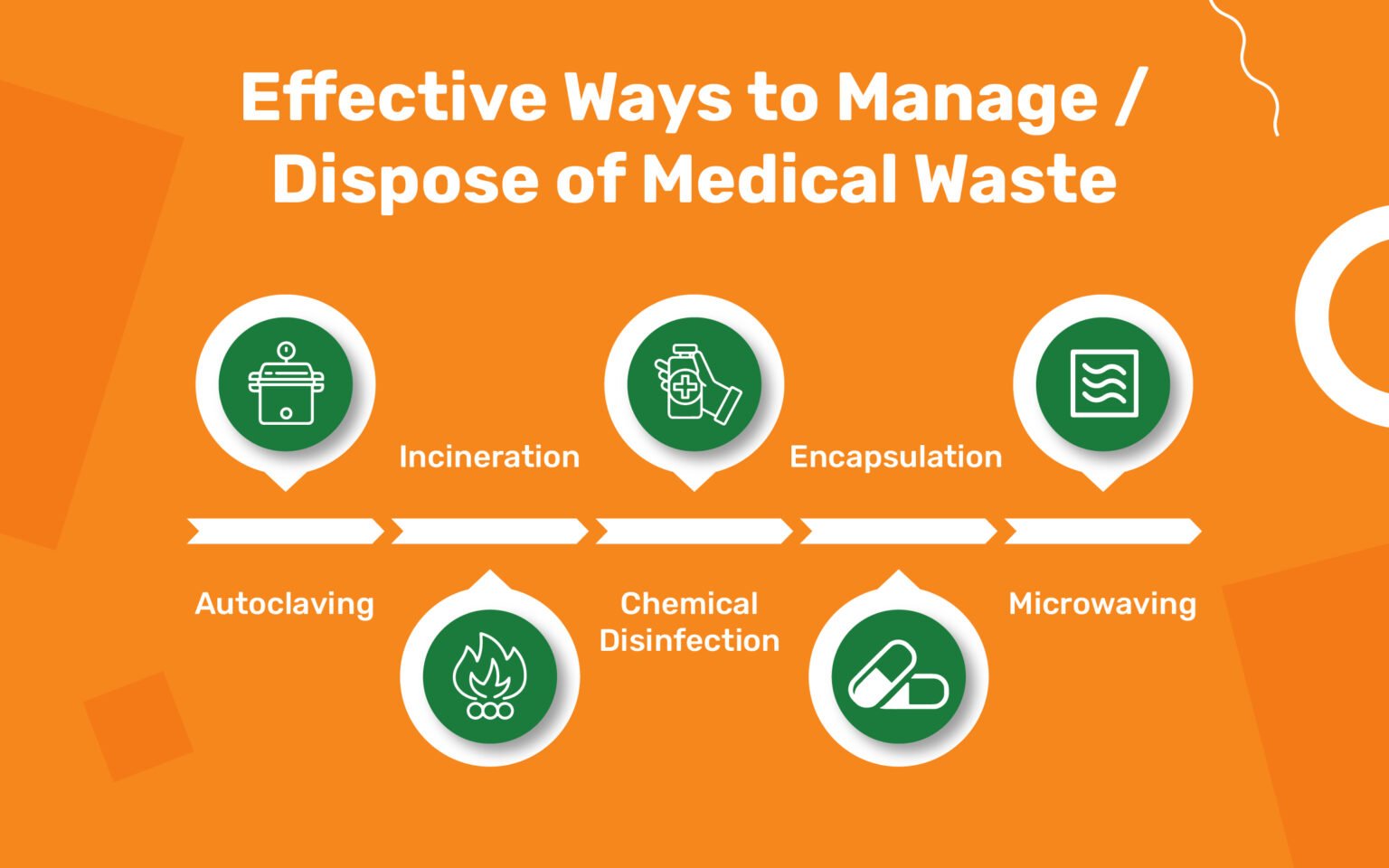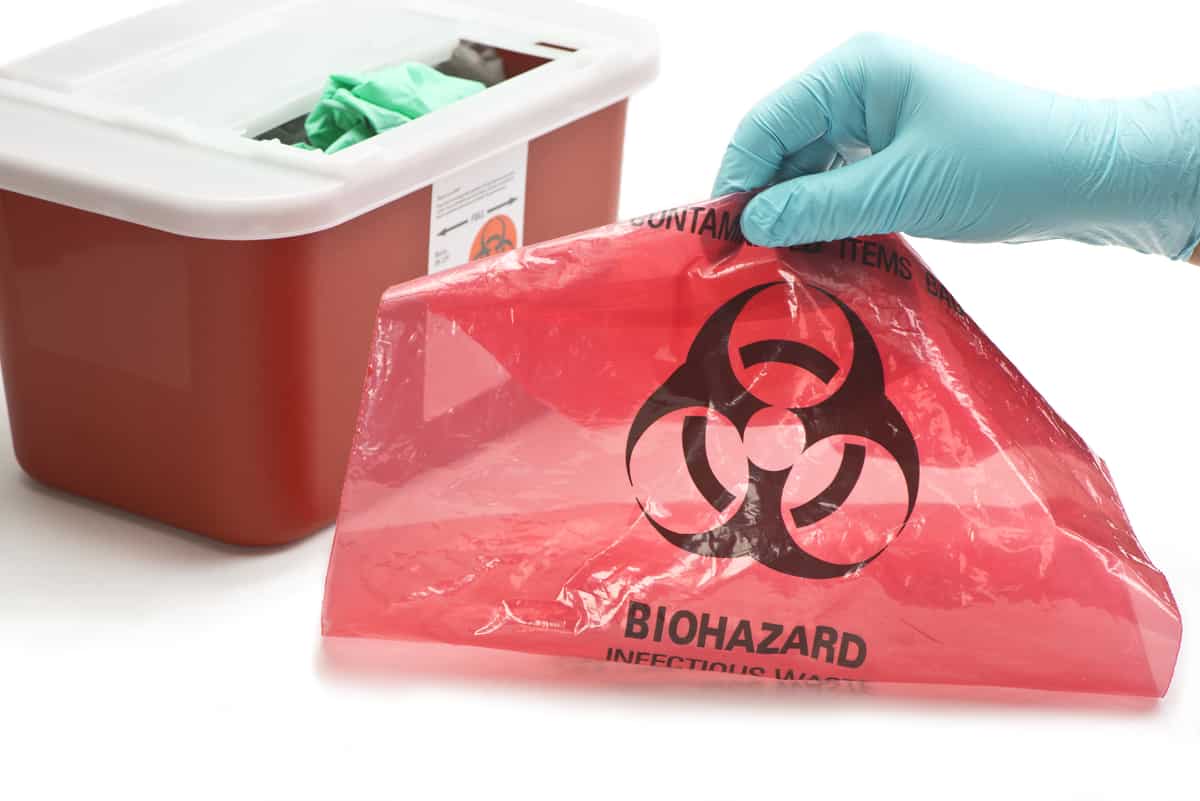Neighborhood Care: Seamless and Reliable Medical Waste Removal Near Me
Neighborhood Care: Seamless and Reliable Medical Waste Removal Near Me
Blog Article
Minimize Costs and Make Best Use Of Safety And Security: Effective Medical Waste Disposal Strategies
Effective medical waste disposal techniques are vital for healthcare facilities to make best use of and decrease costs safety and security. With the expanding problem for environmental sustainability and the raising variety of guidelines surrounding waste monitoring, it is vital for medical care companies to take on certified and effective techniques. By executing proper segregation and classification, effective packaging and labeling, secure transport and handling, effective treatment and disposal approaches, and compliance with regulative guidelines, medical care centers can ensure the secure and accountable administration of medical waste. In this discussion, we will explore each of these strategies thoroughly, offering understandings and practical ideas for healthcare specialists to optimize their waste disposal processes.

Correct Partition and Classification
Appropriate partition and categorization are crucial elements of efficient clinical waste disposal strategies, guaranteeing the safety of healthcare workers, the general public, and the setting - medical waste removal services. medical waste disposal services with WasteX. By dividing various kinds of medical waste at the factor of generation, health care facilities can reduce the risk of cross-contamination and possible damage to environments and individuals
Among the essential consider correct segregation is the recognition and classification of clinical waste. This includes categorizing waste right into various groups, such as contagious, harmful, contaminated, or pharmaceutical waste. Each group needs particular handling, storage, and disposal methods to stop any adverse impacts on human health and wellness and the atmosphere.
Moreover, proper partition also includes the usage of color-coded containers and tags to plainly determine and separate the different types of medical waste. This aids medical care employees and waste administration employees to easily recognize and take care of the waste suitably. Red containers might be utilized for transmittable waste, while yellow containers may be marked for dangerous waste.
Along with partition, proper categorization also entails the right packaging and containment of medical waste. This makes certain that waste is safely stored and transferred without presenting any threats to individuals or the setting. Using puncture-resistant and watertight containers, along with effectively securing and classifying them, helps to stop any type of unintended exposure or launch of dangerous materials.
Efficient Product Packaging and Classifying
Reliable product packaging and labeling play an important function in making sure the efficient and secure disposal of clinical waste. Proper packaging is vital to protect against leakage, damage, or splilling during transportation and handling. It helps to decrease the danger of contamination and shields healthcare employees, waste administration employees, and the environment from prospective hazards.
Medical waste should be packaged in leak-proof and tough containers that are resistant to pierce and breakage. These containers need to be effectively sealed to stop any type of leak. In addition, the product packaging must have the ability to hold up against the problems of transport, consisting of temperature level variants and misuse.
Identifying is just as important as it provides critical details regarding the contents of the waste and any potential dangers related to it. The labels need to include the name of the health care facility, the sort of waste, and any type of special delivery guidelines. Standardized and clear labeling makes certain that waste administration workers can easily recognize and take care of the waste properly.
Efficient product packaging and labeling likewise help in the correct segregation and categorization of medical waste. Clear labeling permits easy recognition of different waste streams, such as transmittable waste, sharps, or pharmaceutical waste. This assists in enhancing the disposal procedure and making sure that the waste is treated or thrown away based on regulative standards.
Safe Transport and Handling
Ensuring the secure transport and handling of clinical waste is of utmost value in order to prevent any kind of prospective health and wellness and ecological threats. Clinical waste, such as sharps, infected materials, and pharmaceutical waste, must be appropriately packaged and dealt with to lessen the danger of direct exposure to dangerous materials and microorganisms.
Delivering medical waste requires compliance with strict policies and guidelines set by ecological companies and neighborhood authorities. These laws intend to secure the health and wellness of employees involved in waste monitoring and stop the launch of unsafe products right into the atmosphere.
To ensure risk-free transport, clinical waste needs to be put in leak-proof and puncture-resistant containers that are correctly secured and labeled. Furthermore, it is important to make use of specialized cars geared up with appropriate safety and security features to move medical waste. medical waste disposal services with WasteX.
Handling clinical waste likewise calls for correct training and adherence to safety and security procedures. Employees associated with the handling of medical waste ought to wear proper personal safety tools (PPE) such as masks, handwear covers, and gowns to decrease the risk of exposure. They need to likewise adhere to strict hygiene practices to avoid the spread of infections and guarantee the safe disposal of waste.
Reliable Therapy and Disposal Methods
Carrying out appropriate treatment and disposal techniques is essential in taking care of clinical waste effectively and lessening possible wellness and ecological threats. Medical waste, that includes sharps, infectious products, chemicals, and drugs, can position substantial risks if not dealt with and taken care of appropriately. There are a number of treatment and disposal methods offered that comply with governing guidelines and promote risk-free methods.
One typical technique is incineration, which includes shedding the waste at high see page temperatures. Incineration is efficient in ruining pathogens and minimizing the quantity of waste, but it can launch dangerous contaminants right into the air if not effectively managed. It is crucial to use modern burners outfitted with exhaust control technologies.
One more approach is autoclaving, which uses vapor and stress to decontaminate the waste. Autoclaving is efficient in eliminating microorganisms and decreasing the quantity of waste, however it needs careful surveillance and maintenance to ensure appropriate functioning. The decontaminated waste can then be safely thrown away in a garbage dump.
Chemical treatment is an additional choice, which involves using anti-bacterials or various other chemicals to counteract microorganisms. This approach is frequently made use of for liquid waste, such as lab samplings. Nonetheless, it is Continue necessary to use suitable chemicals and comply with proper treatments to ensure effective treatment and avoid ecological contamination.

Conformity With Regulatory Guidelines
Sticking to regulatory guidelines is essential in making sure appropriate conformity with clinical waste disposal methods. These standards are established to safeguard public wellness, avoid environmental contamination, and maintain workplace safety and security. Compliance with regulative guidelines is vital for medical care facilities, as non-compliance can lead to penalties, penalties, and reputational damages.
Regulative standards outline the proper handling, storage, transportation, and disposal of medical waste. They supply details instructions on product packaging needs, labeling, and record-keeping. These guidelines likewise resolve the partition of various waste streams, such as sharps, infectious waste, and pharmaceutical waste. Medical care facilities need to ensure that their waste monitoring practices align with these standards to lessen the risk of direct exposure to harmful materials and stop the spread of infections.
To preserve conformity, medical care centers ought to develop detailed waste management programs that consist of staff training, normal audits, and continuous monitoring. It is important to maintain up-to-date with any kind of updates or modifications to governing guidelines, as practices article source may advance over time. By remaining notified and carrying out proper protocols, health care facilities can minimize the capacity for regulatory violations and protect the health and wellness of their team, people, and the bordering neighborhood.
Final Thought
In final thought, applying effective medical garbage disposal strategies is important for decreasing costs and maximizing safety. Proper segregation and categorization, efficient packaging and labeling, safe transportation and handling, and efficient therapy and disposal techniques are essential actions to make certain conformity with governing standards. medical waste removal service. By sticking to these approaches, medical care centers can protect the atmosphere and public wellness while likewise lowering financial concerns linked with clinical waste monitoring
By executing proper partition and categorization, efficient packaging and labeling, risk-free transport and handling, effective therapy and disposal approaches, and compliance with regulatory standards, medical care centers can ensure the accountable and secure monitoring of medical waste. Red containers might be used for contagious waste, while yellow containers may be designated for hazardous waste.
Standard and clear labeling ensures that waste management workers can conveniently determine and handle the waste appropriately. (medical waste disposal services with WasteX)
Clear labeling allows for easy identification of various waste streams, such as infectious waste, sharps, or pharmaceutical waste. These guidelines likewise address the partition of different waste streams, such as sharps, contagious waste, and pharmaceutical waste.
Report this page